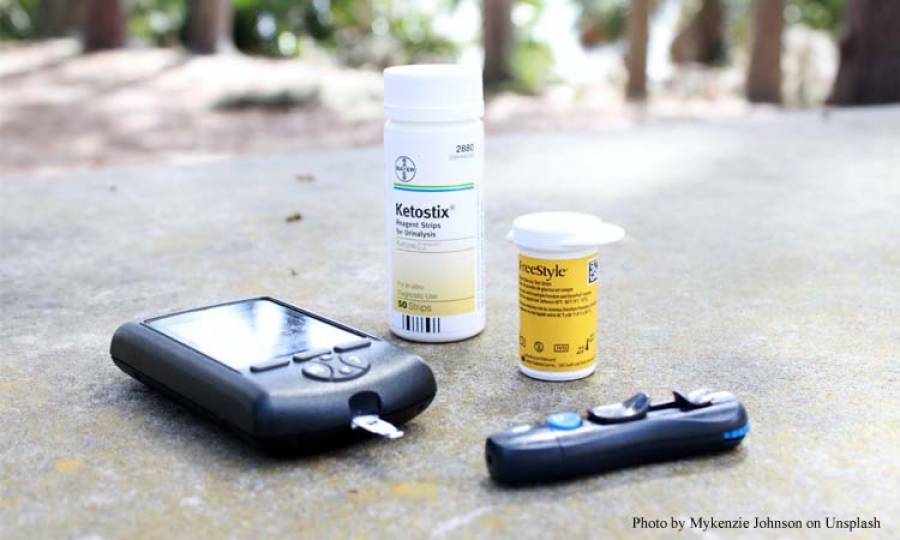33 Million Pakistanis Suffering From Diabetes

KARACHI: Ahead of World Diabetes Day, the International Diabetes Federation (IDF) has issued new figures showing that diabetes in Pakistan has increased significantly as 33 million adults in Pakistan are now living with diabetes – a 70% increase since 2019.
According to IDF, in 2021, diabetes will be responsible for 400,000 deaths in the country, the highest number in the Middle-East and North Africa Region. These findings from the 10th Edition of the IDF Diabetes Atlas, published on December 6th, report that one in four adults (26.7%) in Pakistan are living with diabetes – the highest national prevalence in the world.
Pakistan now has the third-highest number of people living with diabetes globally, after China (141 million) and India (74 million). An additional 11 million adults in Pakistan have Impaired Glucose Tolerance (IGT), which places them at high risk of developing type 2 diabetes.
More than a quarter (26.9%) of adults living with diabetes in Pakistan are undiagnosed. When diabetes is undetected or inadequately treated, people with diabetes are at risk of severe and life-threatening complications, such as heart attack, stroke, kidney failure, blindness and lower-limb amputation. These result in reduced quality of life and higher healthcare costs.
IDF says that 537 million adults now live with diabetes worldwide — a rise of 16% (74 million) since the previous IDF estimates in 2019.
“The rapidly rising level of diabetes in Pakistan presents a significant challenge to the health and wellbeing of individuals and families in the country,” says Professor Abdul Basit, Director, Baqai Institute of Diabetology and Endocrinology, Baqai Medical University.
This year marks 100 years since the discovery of insulin. This milestone presents a unique opportunity to reflect on the impact of diabetes and highlights the urgent need to improve access to care for the millions affected. An estimated 1 in 2 people with diabetes across the world who need insulin cannot access or afford it.
“We must do more to provide affordable and uninterrupted access to diabetes care for all in Pakistan and around the world. Policymakers and health decision-makers must turn words into action to improve the lives of people with diabetes and prevent the condition in those at high risk of developing it,” concludes Basit.
Globally, 90% of people with diabetes have type 2 diabetes. The rise in the number of people with type 2 is driven by a complex interplay of socio-economic, demographic, environmental and genetic factors. Key contributors include urbanisation, an ageing population, decreasing levels of physical activity and increased levels of overweight and obesity.
Much can be done to reduce the impact of diabetes. Evidence suggests that type 2 diabetes can often be prevented. In contrast, early diagnosis and appropriate care for all types of diabetes can avoid or delay complications in people living with the condition.
In Pakistan, the Diabetic Association of Pakistan has initiated the Diabetes Registry of Pakistan (DROP) and signed MOUs with a selection of provincial ministries and private organisations to ensure the accessibility, affordability and standardisation of diabetes care in the country.
Key global and regional findings from the IDF Diabetes Atlas 10th Edition include:
One in ten (10.5%) adults around the world are currently living with diabetes. The total number will rise to 643 million (11.3%) by 2030 and to 783 million (12.2%) by 2045.
1 in 6 adults (73 million) lives with diabetes in the Middle-East and North Africa Region.
An estimated 240 million people live with undiagnosed diabetes worldwide – 27 million in the Middle-East and North Africa Region.
Diabetes was responsible for an estimated USD 966 billion in global health expenditure in 2021. This represents a 316% increase over 15 years.
The Middle-East and North Africa region accounts for 3% (33 billion USD) of the global expenditure.
Excluding the mortality risks associated with the COVID-19 pandemic, approximately 6.7 million adults are estimated to have died due to diabetes, or its complications, in 2021. That’s more than one in ten (12.2%) of global deaths from all causes. The Middle-East and North Africa region accounts for 12% (796,000) of total diabetes-related deaths.
Five hundred forty-one million adults, or 10.6% of adults worldwide, have impaired glucose tolerance (IGT), placing them at high risk of developing type 2 diabetes. Almost one in nine (48 million) people affected by IGT live in the Middle-East and North Africa Region.
More information and supporting data about the national, regional and global prevalence of diabetes from the 10th Edition of the IDF Diabetes Atlas can be found at www.diabetesatlas.org.
The theme selected by IDF for World Diabetes Day - November 14th - is Access to Diabetes Care. IDF calls on national governments to provide the best possible care for people living with diabetes and develop policies to improve diabetes screening and type 2 diabetes prevention, especially among young people. Learn more at www.worlddiabetesday.org.
The IDF Diabetes Atlas is an authoritative resource on the global impact of diabetes. First published in 2000, it is updated periodically by IDF in collaboration with experts worldwide and contains data on diabetes prevalence, mortality and expenditure on global, regional and national levels. The IDF Diabetes Atlas draws attention to the importance and growing impact of diabetes in all countries and IDF Regions. www.diabetesatlas.org
About the International Diabetes Federation
The International Diabetes Federation (IDF) is an umbrella organisation of over 230 national diabetes associations in 170 countries and territories. It represents the interests of the growing number of people with diabetes and those at risk. The Federation has been leading the global diabetes community since 1950. www.idf.org
Trending
Popular
Sindh pledges vigorous action to prevent poliovirus transmission
-
PMA stresses health equity on World ...
04:08 PM, 9 Apr, 2024 -
Dow University’s new rabies vaccine ...
12:18 PM, 28 Mar, 2024 -
IRD role lauded in advancing ...
02:53 PM, 12 Mar, 2024 -
Over one billion people worldwide ...
09:48 AM, 5 Mar, 2024




